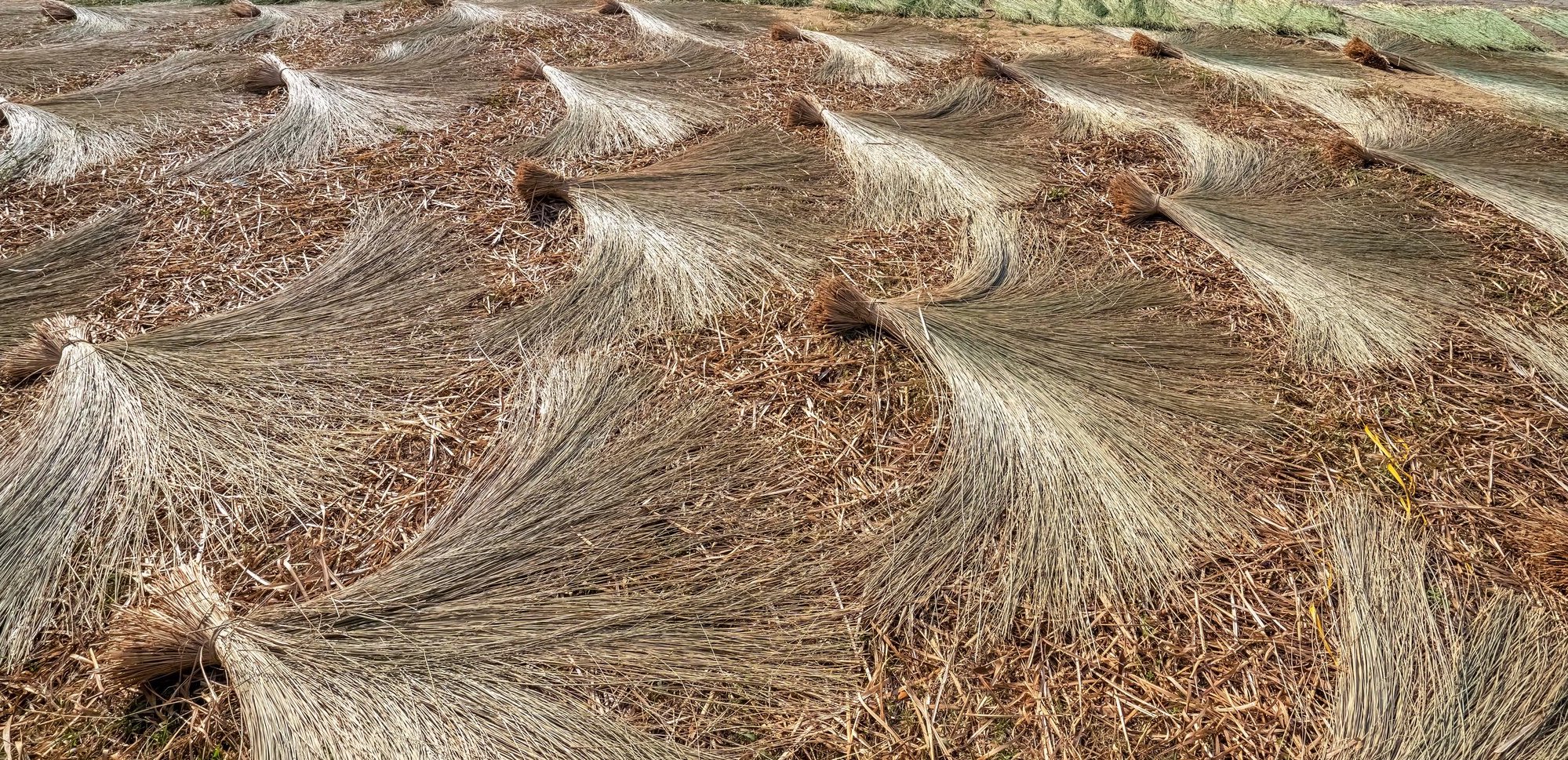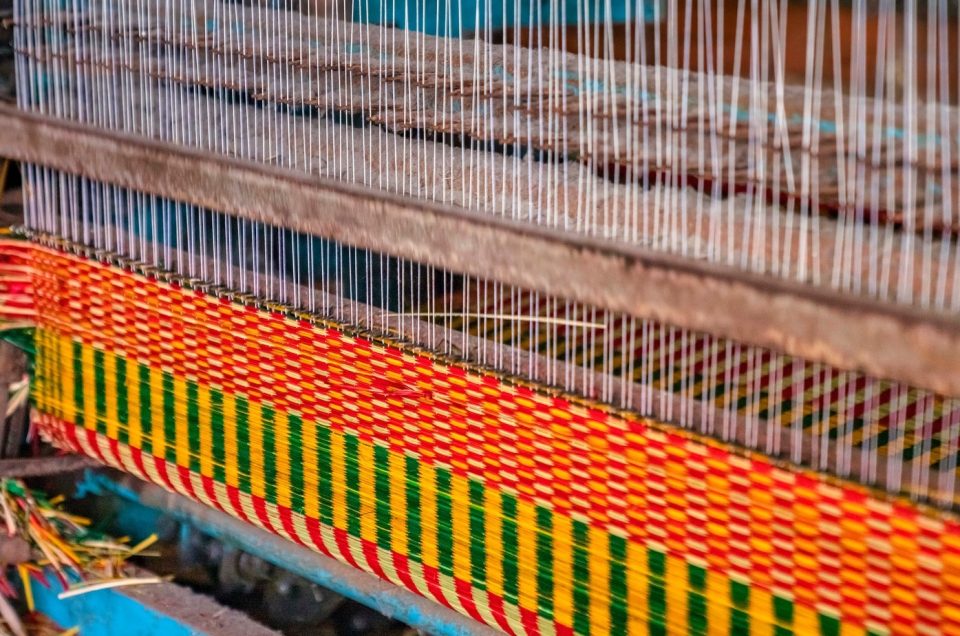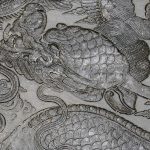The journey of the flower mat
Binh Dinh is a land of martial valor, rich in cultural traditions. This province boasts many craft villages known far and wide for their handmade products. Most notable are the smooth, flexible, and brightly colored sedge mats from Hoai Nhon. Holding one of these mats in my hands, I truly understand why this product is widely favored and has conquered international markets.
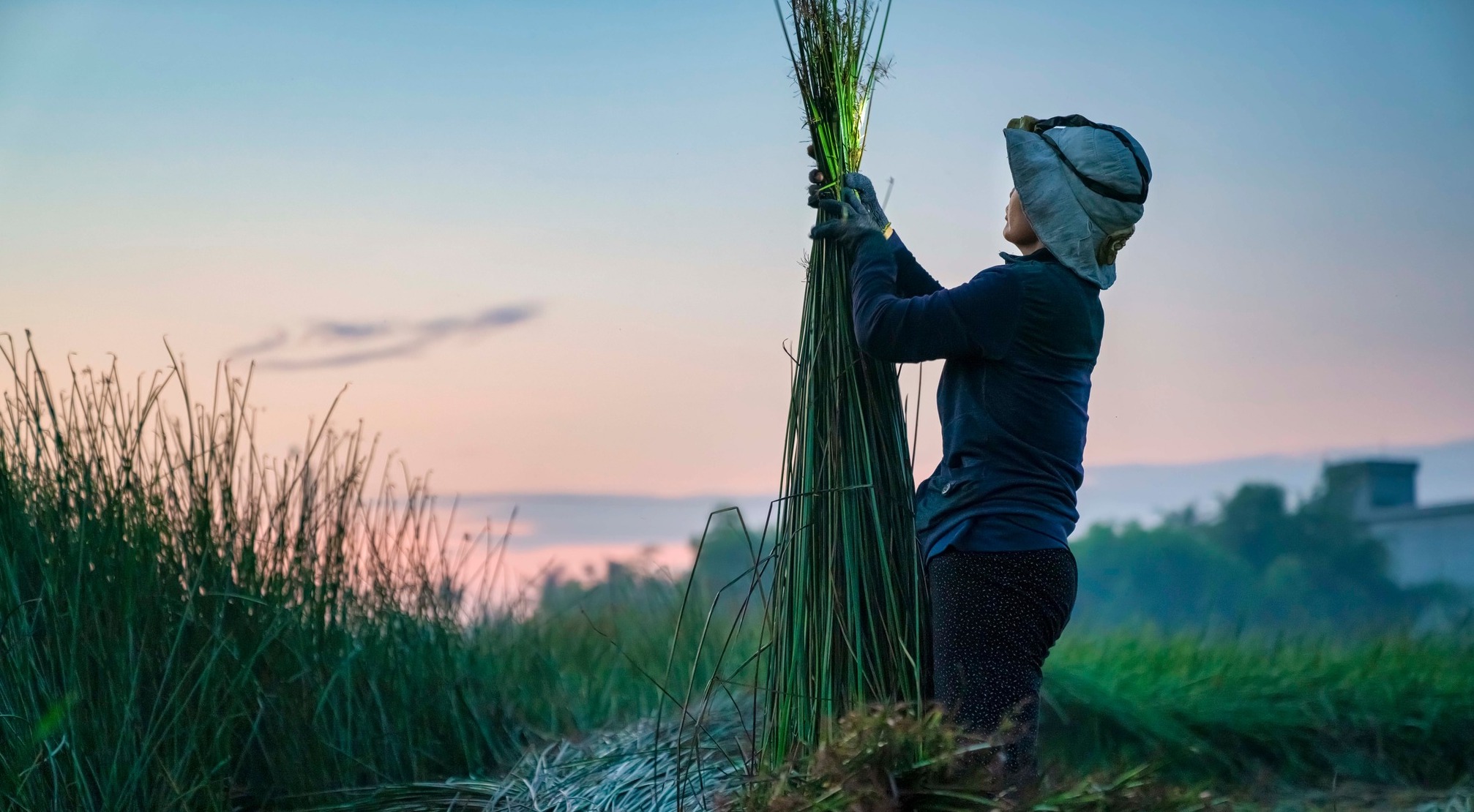
Elders recount that since ancient times, the people of the Hoai Nhon district have grown up beside weaving frames, spending their entire lives with the sedge plant. Everyone in every household weaves mats, forming a long-standing traditional craft. To this day, most farm households in Hoai Nhon still practice this craft, with hundreds of hectares of sedge in the fields, producing tens of thousands of pairs of mats and tens of thousands of square meters of handicraft mats for export each year.
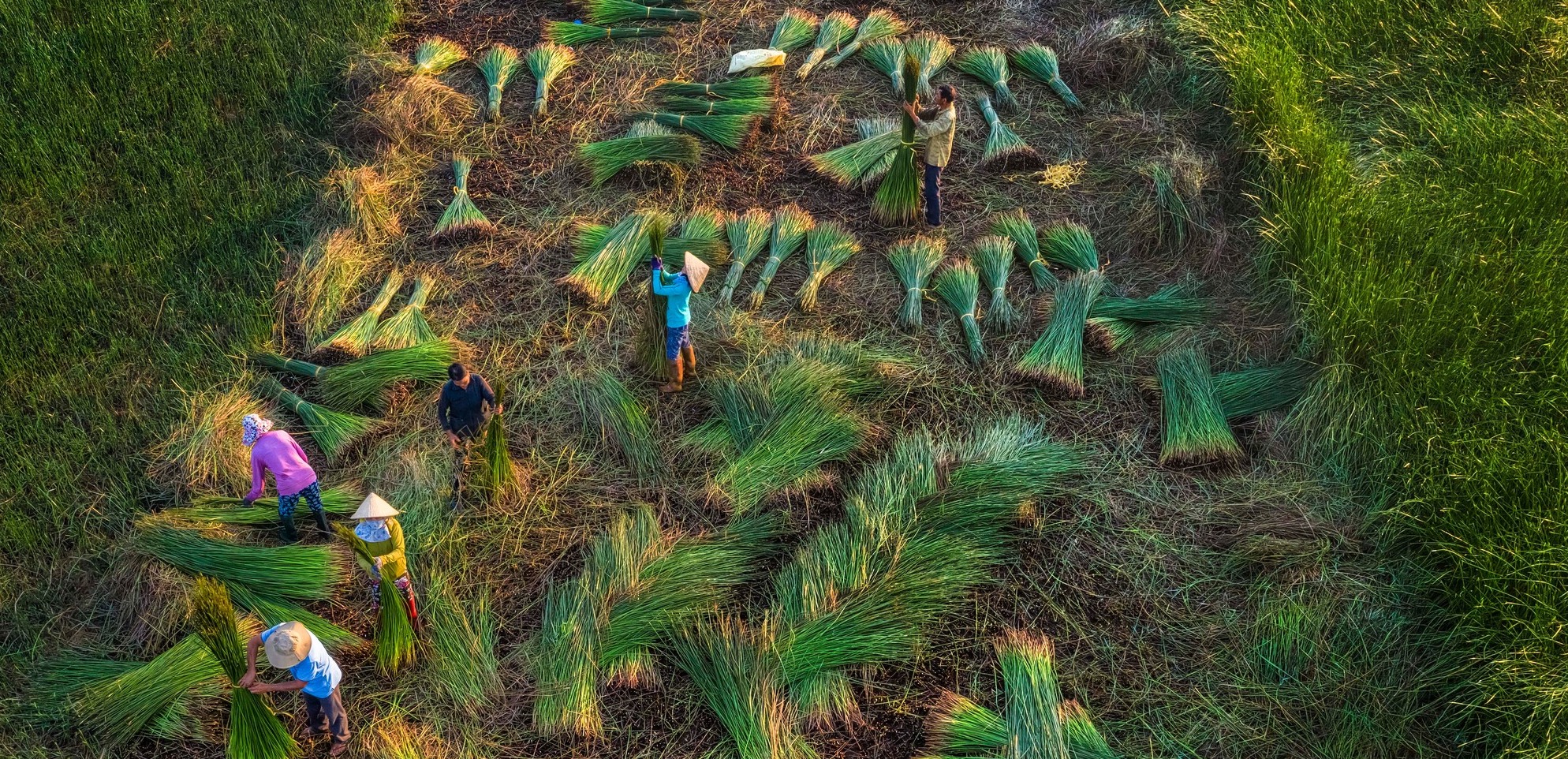
The primary material for making these durable and beautiful mats is the sedge plant, also known as “lác”, a type of herbaceous plant that is soft and resilient. These rushes stand about 1.5 meters tall and are commonly found growing wild in moist, marshy areas. Hoai Nhon’s farmers have transformed fields heavily affected by acidic sulphate into lush, vibrant sedge fields.
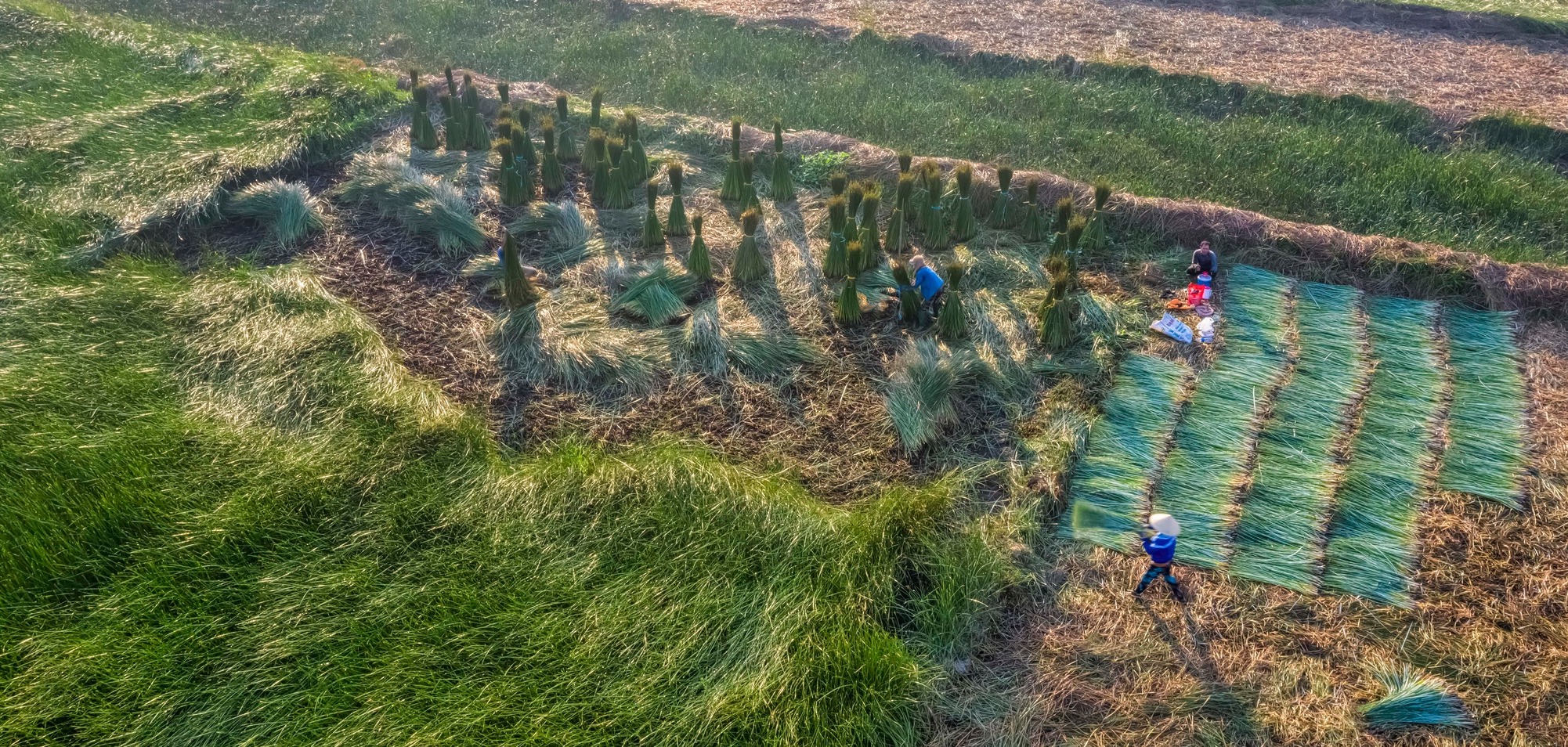
Hoai Nhon is entering its primary sedge harvesting season in April, forming a sight no less beautiful than any harvest painting. Before me lies a serene, boundless view of the sedge fields around Chuong Hoa village, rustling in the wind like a giant sheet of green silk, stretching endlessly to the horizon. The harvest occurs when the sedge plants have matured, bloomed, and stand taller than a person. Ripe sedge does not turn the bright yellow color of rice but blooms while retaining its lush green color. From the early morning, diligent farmers go to the fields to harvest the sedge. The peaceful countryside turns bustling and lively. Skilled farmers swiftly cut the sedge with sharp sickles. They immediately separate the cut sedge and take the main stem from inside the plant. The fresh sedge is tied into bundles, and arranged in rows or spread across the fields. Amidst the vast sedge fields, glimpses of sweat-soaked shirts can be seen.

The fresh sedge is quickly brought back, hand-picked, and split lengthwise into small strands to be dried. The farmer must carefully monitor the drying process until the strands reach the correct resilient dryness, at which point they are gathered. Further drying could make the strands brittle and prone to breaking. The dry sedge strands are then divided, with one part used to weave smooth, simple mats and another dyed for making flower mats. Large pots of dye are prepared to dye the sedge. Bundles are immersed, stained once or twice to ensure the color evenly penetrates the strands, and taken out to sun-dry, resulting in brightly colored, durable strands.
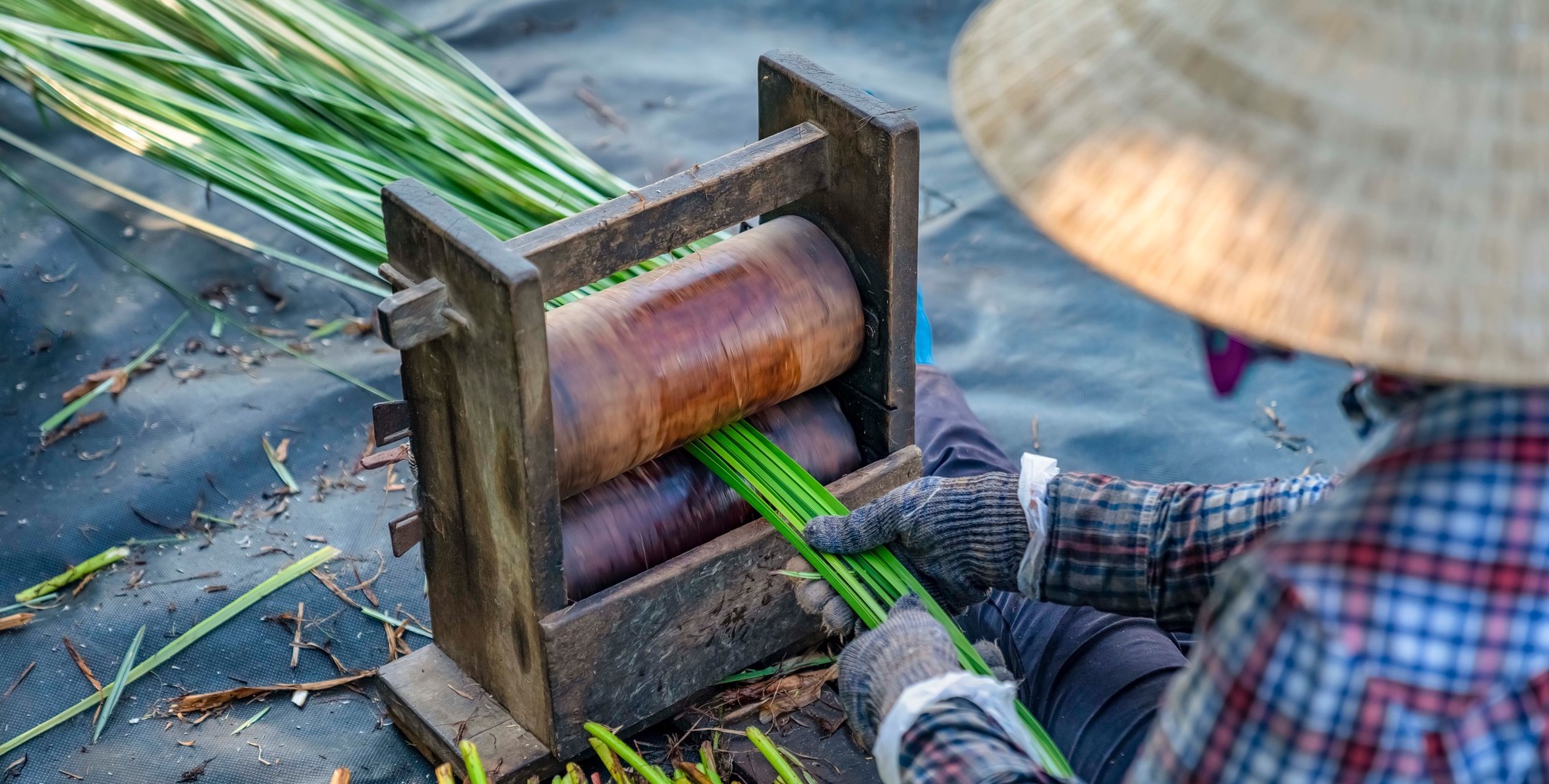
Previously, weaving mats manually required two people to coordinate their actions smoothly and harmoniously. Agile and resilient hands performed numerous movements of pressing, holding, cutting, shaping, and lettering to ensure that the lines were sharp and even and that strands of sedge and color patches were joined together so that, upon completion, they formed harmonious patterns and motifs. The finished mat was then neatly trimmed, braided at both ends and sewn with a complete border before being sun-dried once more to enhance its shine and durability. Today, weaving machines have enabled artisans to increase productivity and invent many new designs. Products from sedge have expanded to include sandals, hats, bags, etc., integrating the sedge weaving craft with tourism. Consequently, traditional villages in Hoai Nhon have become well-known to many tourists.
